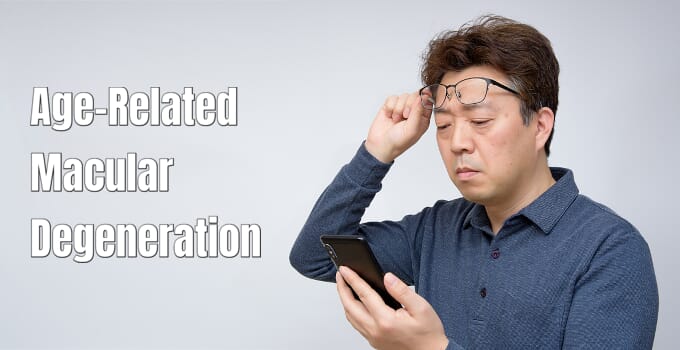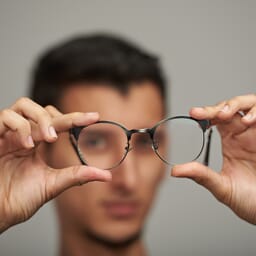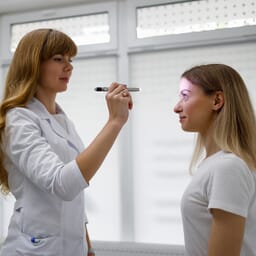
Age-related Macular Degeneration (AMD) is a debilitating eye condition that affects millions of people worldwide. It is a leading cause of vision loss in people over 50 years of age and can have a significant impact on a person's quality of life.
The macula, a small central portion of the retina, is responsible for our central vision and ability to see fine details. AMD damages this vital part of the eye, leading to a gradual loss of central vision and making it difficult to perform everyday tasks.
 In Memory of Nancy Roth – a Personal Story
In Memory of Nancy Roth – a Personal Story By Don Roth, CEO AmpliVox
On September 4, 2018, Nancy Roth lost her six-year battle with ocular melanoma. This rare disease, which occurs in 2,000 adults each year, currently has no cure in its metastatic form.
Her struggle began with AMD. Since her passing, her husband Don Roth has been raising funds to help support research and treatment of ocular melanoma and raising awareness.
Causes of AMD

Age is the main risk factor. As we get older, the tissues in our eyes break down and become more susceptible to damage, including the macula.
A family history of AMD increases the likelihood of developing the condition. Research has also shown that certain genes increase the risk of AMD.
Other factors such as lifestyle, smoking, and diet. Certain lifestyle factors, such as smoking, a diet low in antioxidants, and exposure to UV light, can increase the risk of developing AMD. Obesity and high blood pressure are also associated with an increased risk of the condition.
A family history of AMD increases the likelihood of developing the condition. Research has also shown that certain genes increase the risk of AMD.
Other factors such as lifestyle, smoking, and diet. Certain lifestyle factors, such as smoking, a diet low in antioxidants, and exposure to UV light, can increase the risk of developing AMD. Obesity and high blood pressure are also associated with an increased risk of the condition.
It's important to note that not everyone with risk factors for AMD will develop the condition, and some people may develop AMD without any known risk factors. However, by understanding the causes of AMD, people can take proactive steps to help protect their eyes and prevent the progression of the condition.
Symptoms

The symptoms of AMD can vary depending on the type and severity of the condition, but they typically develop gradually over time.
One of the earliest signs of AMD is a gradual loss of central vision. This can make it difficult to see fine details, such as the faces of loved ones or small print.
Some people with AMD may experience distorted or blurred vision. This can make it difficult to recognize objects or read text clearly.
As the condition progresses, people with AMD may find it increasingly difficult to perform daily tasks such as reading, cooking, or driving.
One of the earliest signs of AMD is a gradual loss of central vision. This can make it difficult to see fine details, such as the faces of loved ones or small print.
Some people with AMD may experience distorted or blurred vision. This can make it difficult to recognize objects or read text clearly.
As the condition progresses, people with AMD may find it increasingly difficult to perform daily tasks such as reading, cooking, or driving.
If you are experiencing any of these symptoms, it is important to schedule an eye exam with an ophthalmologist or optometrist as soon as possible. Early detection and treatment can help slow the progression of the condition and preserve vision.
Types of AMD

There are two main types of AMD: dry and wet.
Dry AMD is the most common form of the condition and accounts for about 85-90% of cases.
It is characterized by the gradual buildup of waste material in the retina, leading to a gradual loss of central vision.
There is no cure for dry AMD, but there are steps that can be taken to help slow its progression, such as eating a healthy diet rich in antioxidants and avoiding smoking.
Wet AMD is less common but more severe than dry AMD. It occurs when abnormal blood vessels grow under the retina and leak fluid, causing damage to the macula.
Dry AMD is the most common form of the condition and accounts for about 85-90% of cases.
It is characterized by the gradual buildup of waste material in the retina, leading to a gradual loss of central vision.
There is no cure for dry AMD, but there are steps that can be taken to help slow its progression, such as eating a healthy diet rich in antioxidants and avoiding smoking.
Wet AMD is less common but more severe than dry AMD. It occurs when abnormal blood vessels grow under the retina and leak fluid, causing damage to the macula.
Wet AMD can cause rapid vision loss, but there are treatments available that can help slow the progression of the condition and preserve vision.
It's important to note that some people with dry AMD may progress to wet AMD, so it is important to have regular eye exams and monitor any changes in vision. An ophthalmologist or optometrist can diagnose and monitor the progression of the condition and recommend appropriate treatment options.
Coping with AMD

Living with AMD can be challenging, but there are resources available to help people affected by the condition manage its impact and maintain their independence and quality of life.
Low vision rehabilitation can help people with AMD learn new strategies for completing daily tasks, such as using magnifying glasses, special lighting, and assistive technology.
Joining a support group can provide a sense of community and emotional support for those affected by AMD.
These groups can also offer helpful information and resources for coping with the condition.
Low vision rehabilitation can help people with AMD learn new strategies for completing daily tasks, such as using magnifying glasses, special lighting, and assistive technology.
Joining a support group can provide a sense of community and emotional support for those affected by AMD.
These groups can also offer helpful information and resources for coping with the condition.
Assistive devices, such as magnifying glasses, large print books, and talking computers, can help people with AMD maintain their independence and continue to enjoy their favorite activities.
Making lifestyle changes, such as eating a healthy diet rich in antioxidants, avoiding smoking, and engaging in physical activity, can help slow the progression of AMD and improve overall health.
Living with AMD can be challenging, but there are resources and support available to help people affected by the condition manage its impact and maintain their quality of life. It's important to stay positive, seek support, and stay informed about the latest developments in treatment and management options.
